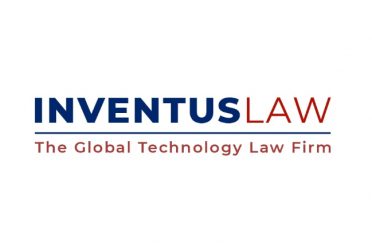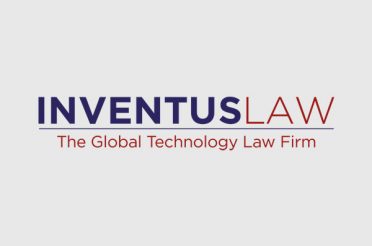Paycheck Protection Program Flexibility Act of 2020
The Paycheck Protection Program Loan (the “PPP Loan”) part of the CARES Act was amended on June 5, 2020 when it was signed into the law by President Trump (the Paycheck Protection Program Flexibility Act (the “Flexibility Act” or the “Act”)). The Flexibility Act makes significant amendments to the CARES Act which was enacted on March 27, 2020. These amendments which are briefly described below provide a lot of flexibility to the PPP Loan borrowers in terms of how to use their loan proceeds to mitigate the impact of COVID-19 to their businesses. Some key highlights of the Flexibility Act are as follows:
- Extension of the forgiveness period – The Flexibility Act has extended the forgiveness period from eight (8) weeks to the earlier of (i) 24 weeks and (ii) December 31, 2020, from the date of origination of the PPP Loan. The Act allows borrowers of PPP Loan prior to June 5, 2020 to elect to use the eight-week forgiveness period.
- New 60/40 Forgiveness Threshold for use of PPP Loan – The Flexibility Act reduces the threshold requirement of 75% to 60% with respect to the use of PPP Loan toward payroll costs. The Act now allows borrowers to use the PPP Loan up to a 40% for non-payroll related expenses like rent, mortgage interest and utility payments, all in effect before February 15, 2020).
Most importantly, no forgiveness under the Act will be allowed unless at least 60% of the PPP Loan is used for payroll costs. In other words, it is an “all or nothing” threshold.
- Extension of the FTE Reduction Safe Harbor – The Flexibility Act makes two significant changes to the safe-harbor provided under the CARES Act for Full Time Equivalent (“FTE”) employee reduction:
(a) Exemption from Reduction in Forgiveness: The Act provides that, during the period beginning on February 15, 2020, and ending on December 31, 2020, the forgivable amount will be determined without regard to a proportional reduction in the number of FTEs if the borrower, in good faith, is able to document its:
(1) (i) inability to rehire individuals who were employees on February 15, 2020; and (ii) inability to hire similarly qualified employees for unfilled positions on
or before December 31, 2020, or
(2) to return to the same level of business activity as it was before February 15, 2020 due to compliance with certain federal requirements or guidance[1] issued related to COVID-19 during the period beginning on March 1, 2020 and ending December 31, 2020.
- Extension of Loan Maturity Date – The Flexibility Act extends the minimum loan term from 2 to 5 years for the loans made on or after June 5, 2020. With respect to the existing loans, the Flexibility Act does not prevent lenders and borrowers from mutually agreeing to modify the maturity terms of such loans.
- Extension of PPP Loan Deferral Period – The Act removes the 6-month deferral of payments for the non-forgiven portion of the PPP Loan and allows the borrowers to defer payments of principal, interest, and fees until the amount of forgiveness is determined and remitted to the lender.
Additionally, the Act provides that if a borrower fails to apply for forgiveness within 10 months after the last day of the forgiveness period, such borrower must pay the principal, interest and fees after the expiration of 10 months after the last day of the forgiveness period.
For example: A borrower received PPP Loan on June 3, 2020, the applicable forgiveness period is until November 18, 2020 (earlier of 24 weeks and December 31, 2020). The borrower must apply for forgiveness of the PPP Loan no later than September 18, 2021. If the borrower fails to do so, such borrower must begin repayment of the PPP loan and any applicable fee from September 18, 2021 onward.
- Removal of Restrictions on Payroll Tax Deferral – The Flexibility Act removes the disqualification imposed by the CARES Act on employers who received PPP Loan forgiveness to take payroll taxes deferrals.
It is important to note that the existing Loan Forgiveness Application issued by the SBA linked here, is not consistent with the Flexibility Act. We expect to receive additional guidelines and a revised forgiveness application from the SBA in the near future.
This memo is not intended to constitute legal advice. If you have any questions about the Paycheck Protection Flexibility Act and the Loan Forgiveness under the PPP program, you can contact Christopher L. Rasmussen, Managing Partner, Inventus Law, PC., at chris@inventuslaw.com or Aakshita Bansal, Extern, Inventus Law, PC., at aakshita@inventuslaw.com.
Disclaimer: This Memo is being provided for information purposes only and is drafted entirely on the bases of public resources. Information contained on or made available herein is not intended to and does not constitute legal advice, recommendations, mediation or counseling under any circumstance. This information and your use thereof do not create an attorney-client relationship. You should not act or rely on any information provided herein without seeking the advice of a competent attorney licensed to practice in your jurisdiction for your particular business. We anticipate that new guidelines on Loan Forgiveness under the PPP Program and an updated PPP Loan Forgiveness Application will be issued in the near future, which we will continue to monitor and provide updates on.
[1] Guidance issued by the Secretary of Health and Human Services, the Director of the Centers for Disease Control and Prevention, or the Occupational Safety and Health Administration related to the maintenance of standards for sanitation, social distancing, or any other worker or customer safety requirement related to COVID–19. See https://www.congress.gov/bill/116th-congress/house-bill/7010/tex




